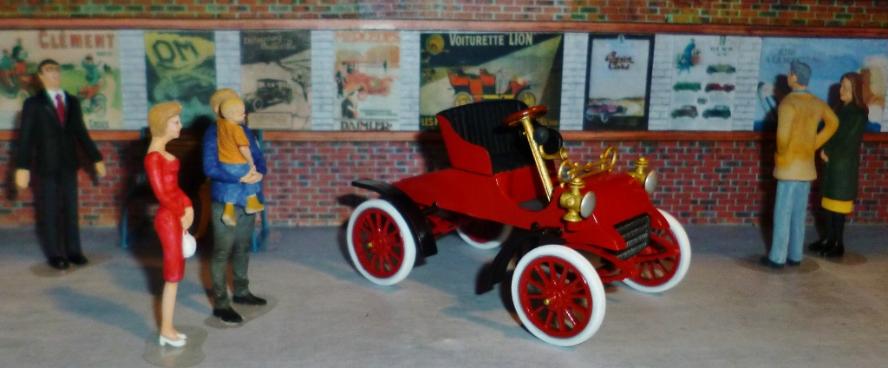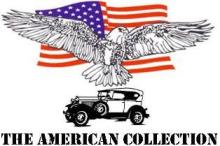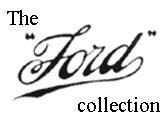
1903 Ford Model ‘A’ rear entry tonneau
Henry Ford had to try three times to achieve his desire to run a motor car production business. After the first two attempts failed, for a variety reason which had little to do with the actual products, the Ford Motor Co. was founded, providing all the proof needed for the old “third time lucky” adage.
Fords late 1800s gasoline engined quadricycle (built while he was still working for Thomas Edison, and with Edison’s full knowledge), may have seemed a little primitive but it proved Ford’s engineering ability and allowed him to learn a great deal. Not about to let Edison gain from his work Ford left Edison’s employ and charmed a group of investors founding the Detroit Automobile Company in 1899. The venture didn’t last. Ford’s second attempt, the 1901 ‘Henry Ford Company’, fared a little better; although it did result in one of the worlds’ greatest marques; Cadillac. Henry Ford fell out with his associates and resigned from his own company holding the rights to use his own name and $900.
In 1903 the Ford Motor company came into being and is today still one of the world’s largest car manufacturers; but the start was very shaky and came perilously close to failure.
The Model ‘A’
The first production model from the new Ford Motor Co. was, predictably, the Model ‘A’. If it bears a striking resemblance to the first Cadillac model it is because, to all intents and purposes, it is the same car, but with a different engine.
Ford’s Model ‘A’ was an up-to-the-minute design, well-built and well presented. However, finding a place to build the cars, getting all the tooling in place and the people to build them wasn’t cheap. Henry Ford had secured an initial investment of $28,000 (something like $807,000 in 2020 terms), but had just $223.65 left in the kitty in mid July 1903.
Fortune smiled and the first three orders arrived in the nick of time. The first three Model ‘A’ Ford automobiles were sold on the 13th of July, 1903. The first car went to a Dr. E. Pfennig, a dental surgeon from Chicago, who paid the full asking price, and two deposits were taken from other customers. One was a $300 deposit from the Indiana Motor Co., the other a $170 deposit made by a butter maker from Britt, Iowa, Mr. Herbert L. McNary. His car, the third off the line and carrying chassis No.30, is today the oldest surviving Model ‘A’ and owned by Bill Ford, as a ‘Ford’ family heirloom. William Clay Ford Jr. is Henry Ford’s great-grandson, and the executive chairman of the Ford Motor Co.
Designed by Henry Ford the Model ‘A’, also known as the “Fordmobile”, was available as a 2-seat runabout or a 4-seat rear-entry tonneau. Both had the same chassis and base body creating a car that was 103 inches in overall length and 65 inches wide. A wheelbase of 72inches (or 1.8m) placed the 29-inch wooden artillery spoke wheels carrying 3-inch double tube tyres, under full-elliptical leaf spring suspension, Braking was by a mechanically operated contracting band that operated on the live rear axle. The curb weight was 1,240 pounds (or 562kg).
The motive power came from a naturally aspirated, twin-cylinder, horizontally opposed engine mounted longitudinally amidship on the passenger side of the car. There were 2 valves per cylinder in an L-head side valve design, and the whole unit displaced 1668cc, or 101.788cu’in, to produced 8hp. A 5-gallon petrol tank was sited under seat and presumably fed the carburettor through gravity.
A centrally mounted flywheel sat alongside engine crankcase then the chain drive to the rear wheels slightly off set to the drivers’ side. A 2-speed plus reverse planetary transmission, manually operated, fed power via chain-drive to the live rear axle giving a rear-wheel drive system.
On smooth roads, which weren’t common at the time, the Model ‘A’ could reach a top speed of 30mph but in practical terms 28mph, or 45kph, was the best a driver could hope for.
Ford advertised the Model ‘A’ as the "most reliable machine in the world" although in truth it suffered from all the problems of any motorcar of the era; namely overheating, slipping transmission bands, fluid leaks and self-adjusting itself into breaking down at the most inopportune of times. The “Cycle and Automobile Trade Journal” issue of August 1903 carried a report of the Model ‘A’ stating:
“When in motion there is a light purring of the gear to be heard if one listens for it; there is absolutely no vibration to be felt; the riding is perfectly smooth and agreeable.
The wagon is, of course, under entire control, and is extremely handy in a crowded street, and, taken all in all, this latest of American wagons offered leaves very little indeed to be desired.
There will undoubtedly be advances in the art, but there will never be any wagon much more comfortable for its passengers than the Ford, and the machine work is excellent, everything being finished and secured in a workmanlike manner.
The Ford Company finishes the bodies itself, and the external appearance is extremely good.“
The real problem for the new Ford was the price. The basic two-seater runabout sold for $800 with an optional folding hood costing a further $30 for the rubber version or $50 for a leather one. At $850 the Ford was $150 more than the comparable Oldsmobile Curved Dash which was its closest competitor. The 4-seat tonneau with additional top became a $900 car; this at a time when the average wage was $489 a year! And, Model ‘A’ was only available in from the factory in red! Sales were not at all brisk.
The Ford Motor Company’s, 1903-04 plant was on Mack Avenue on Detroit's East Side. A modest wood-frame building, and disused wagon works, which Ford rented to get his dream of transportation for the masses underway. During a 15-month period Ford produced around 1,700 Model ‘A’s. It was replaced by a visually similar Ford Model ‘AC’ fitted with a larger 10hp engine and then the actual Ford Model ‘C’.
Our Model is a representation of the Bill Ford owned car, Model ‘A’ chassis #30, the red rear entry Tonneau originally delivered to Mr. Herbert McNary. This car is the only survivor of those original three sales of July the 13th, 1903, that set Ford on the road to global fame. This of course makes it the oldest surviving Ford production car.
The McNary family owned the car for over 50 years before selling it to an Iowa car collector for the princely sum of $400. Harry E. Burd researched the cars history and had it restored. He sold it in 1961 to a Ford dealer in Switzerland which led to it being displayed in the European headquarters of Ford in Cologne, Germany. Burd repurchased this special Model ‘A’ in 2001 and as part of Ford’s centenary events it even ran in the Veteran Car Club’s London to Brighton rally in 2003. John O'Quinn purchased the car from Burd in 2007, and eventually the now famous car went to auction in October 2012 run by RM Auctions of Hershey, Pennsylvania, where it was sold for $264,000 to its most noteworthy owner; William Clay Ford Jr. For a bit of balance, a similar 1903 Ford Model 'A', fully restored and with an impressive catalogue of spare parts, was sold at auction by Bonhams in 2019 for $137,760. Apparently, over 100 of the approximately 1,700 Model ‘A’s sold have survived, but they very rarely go on sale.
Just the sixth owner of the Model ‘A’ chassis #30, Bill Ford had the car given a mild restoration by Terry Deters Restorations in Temperance, Michigan, and took lessons to be able to drive this historically important car. It is probably safe to say the Ford family are likely to be the final owners.













With all that said, the model still has potential for a dedicated model maker. On this occasion, not Ian. After a fair amount of consideration, he decided to build this model straight from the box in a rather amateur way, meaning the kit faults have all largely been left unrectified, in order for viewers to clearly see how the kits look initially and better understand the amount of work needed to make these kits into decent models. It is also hoped that folks will understand that if one looks beyond the box contents there are still beautiful models to be made from outdated and poor-quality kits; if one is prepared to take the time to extract the model from the problems.
The model is primed with Alclad 2 white primer and micro-filler applied by airbrush. The body colour is from the PlamoUK range. Ford Model ‘A’s were only available in red and this red paint seemed to match quite well with the photos of the Ford heirloom.

